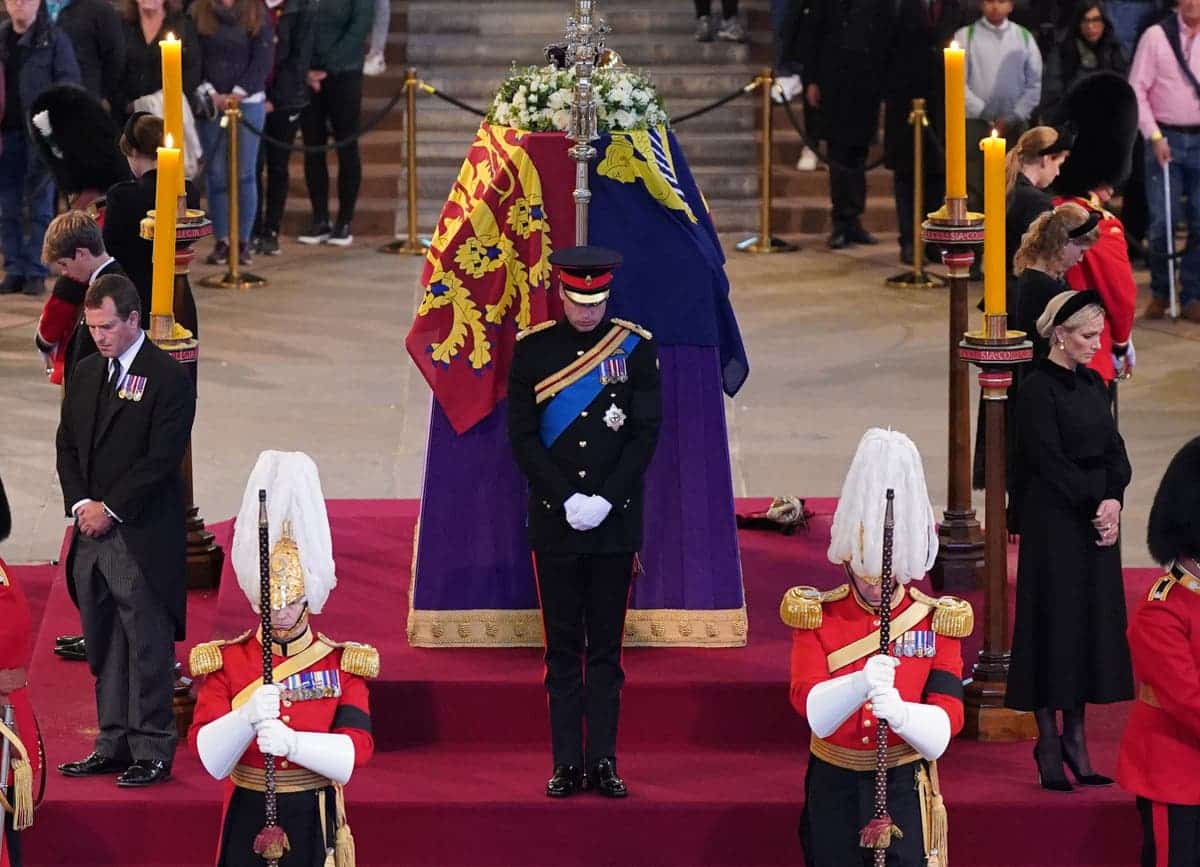Before the final day of the lying in state, the Queen’s eight grandchildren held a tearful evening vigil in front of their beloved grandmother’s casket.
In the vast Westminster Hall, there was a moment of solemn silence as the Prince of Wales, wearing the Blues and Royals No. 1 uniform, stood at the head of the coffin with his brother, the Duke of Sussex, at the foot.
Zara Tindall and Peter Philips, the future king William’s cousins, stood on either side of him.
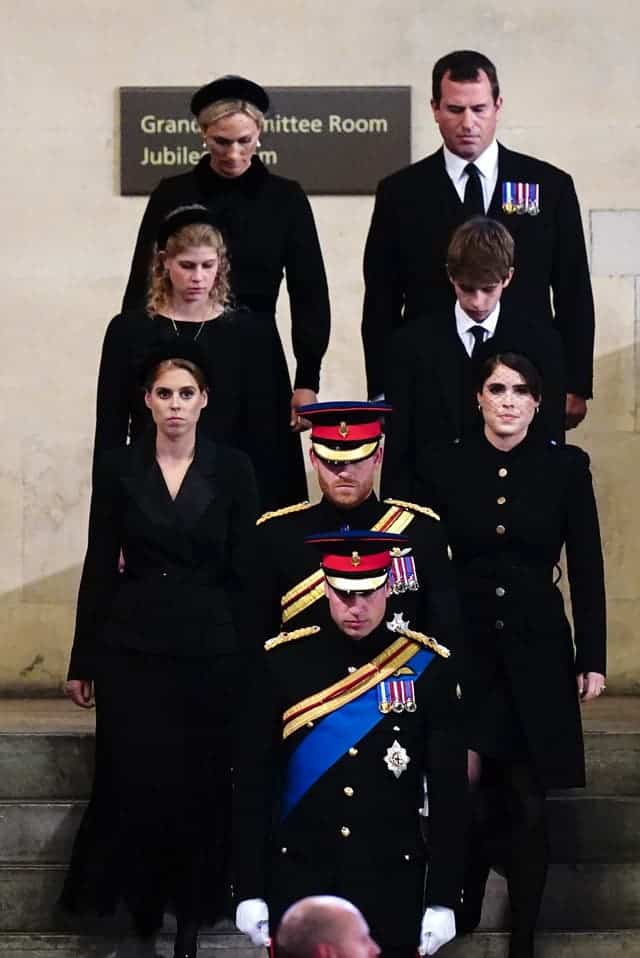
Princesses Beatrice and Eugenie were on either side of the coffin, with Viscount Severn, the Queen’s youngest grandchild, who is only 14 years old, and Lady Louise Windsor, 18 years old, in the middle. Harry was positioned between the two princesses.
The younger members of the royal family stood in the spotlight, united in their grief for their grandmother but maintaining their composure – just as the Queen was renowned for – throughout. Mourners passing by slowed almost to a stop to observe them.
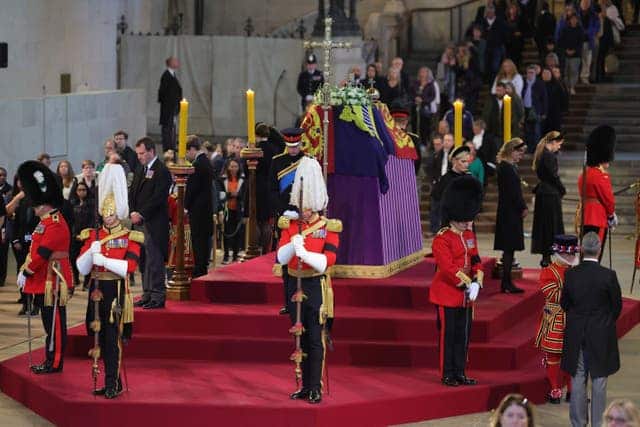
The King had invited the grandchildren, who had wished to show their respect in the same way as their parents had the previous evening.
The only time Harry, who had his honorary military titles revoked by the Queen following the Brexit, will be spotted in military garb at formal events is when he grieves for the Queen. His father, the King, has given him permission to do so.
The Countess of Wessex appeared distraught as she watched Lady Louise and James assume the challenging position.
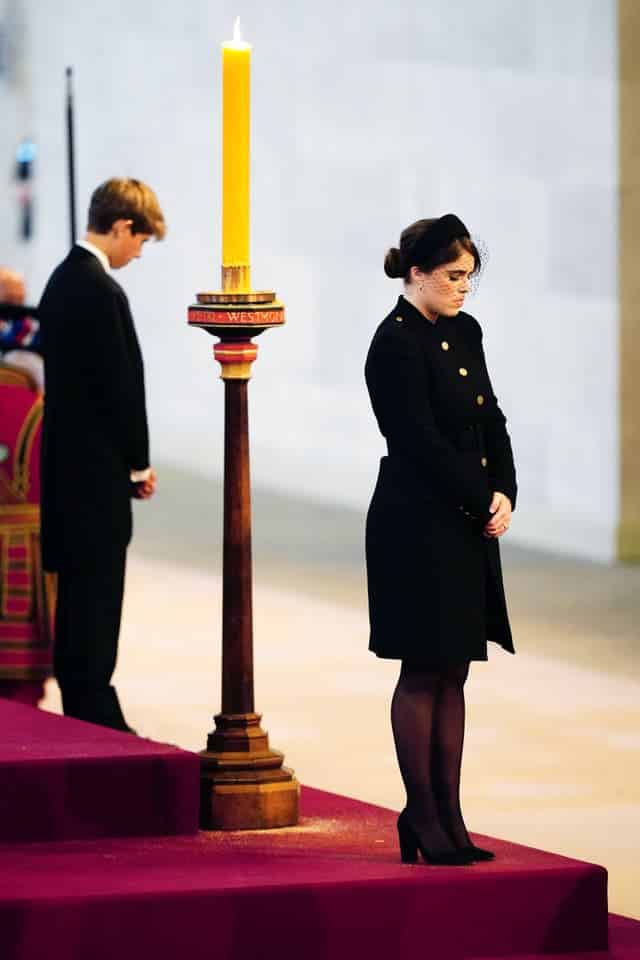
The cousins were standing motionless, their heads bowed, and their eyes fixed downward as Eugenie closed hers.
Just one hour earlier, Beatrice and Eugenie had addressed the Queen in a heartfelt tribute, saying: “Goodbye dear Grannie, it has been the honour of our lives to have been your granddaughters.”
In a letter to their grandmother, the sisters expressed gratitude for “making us laugh, for including us, for picking heather and raspberries, for marching soldiers, for our teas, for comfort, for joy”.
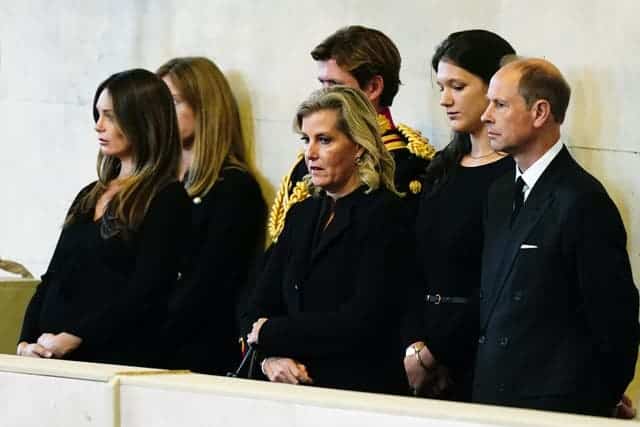
The princesses expressed how much they missed the Queen and thanked her for being “the loving hand on our backs leading us through this world”, adding: “We, like many, thought you’d be here forever.”
With only two days until the Queen’s state funeral, Charles was given a tour of the Metropolitan Police Service Special Operations Room before William and the King went on a walkabout on Saturday afternoon to greet mourners in line for the lying in state.
South London’s Lambeth saw hundreds of people in line cheering and applauding as William and Charles shook hands with many of them and talked about how long people had been waiting and whether they were able to stay warm.
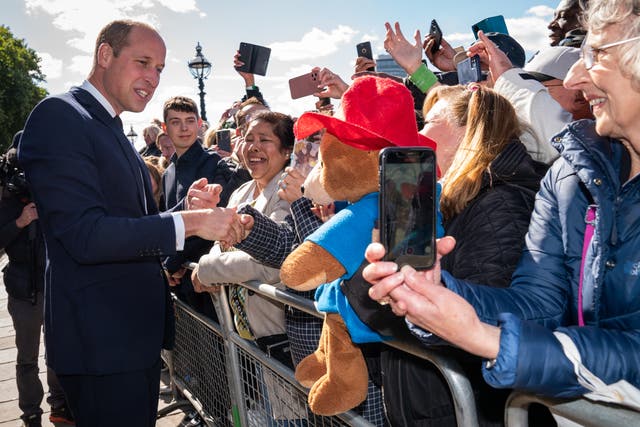
After meeting William, several people started crying, and one woman said to him: “You’ll be a brilliant king one day”, while another told Charles the Queen would be proud of him.
Outside Buckingham Palace, the Earl and Countess of Wessex also spoke with well-wishers.
Edward said to the audience: “I know that my mother would really appreciate this fantastic support.”
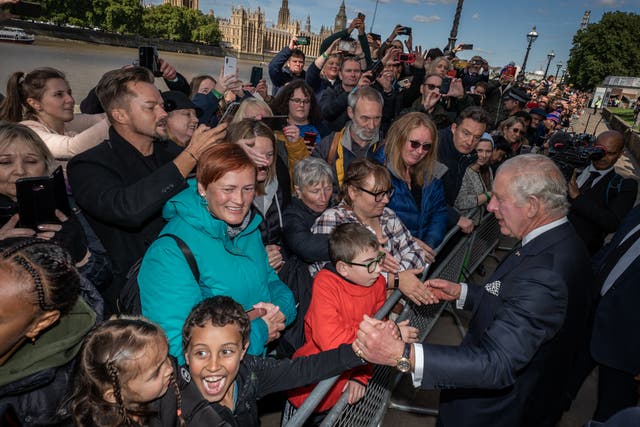
As dignitaries and world leaders arrived over the course of the weekend, the King engaged in a variety of diplomatic responsibilities as head of state.
He met with five prime ministers: Justin Trudeau of Canada, Anthony Albanese of Australia, Philip Davis of the Bahamas, Andrew Holness of Jamaica, and Jacinda Ardern of New Zealand.
In addition, he hosted a luncheon at a palace for governors-general from the Commonwealth realms, at which the Princess of Wales, the Prince of Wales, and the Queen Consort also participated.
During a royal engagement, Kate was seen engaged in a conversation with Camilla.
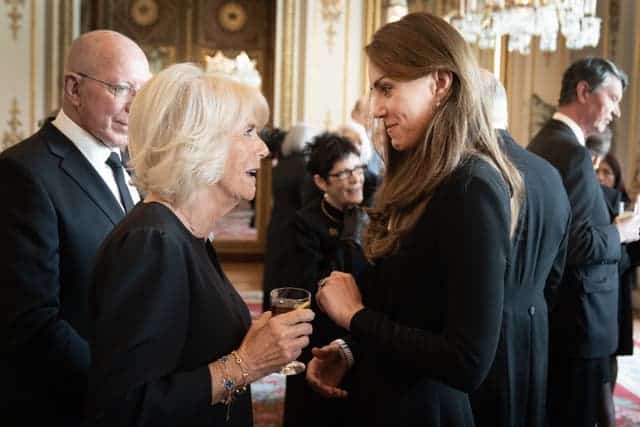
The princess’s long three-strand pearl necklace and pearl earrings, both gifts from the late Queen, were worn by her with her hair down.
Final preparations are being made at Westminster Abbey in anticipation of the funeral on Monday.
The service, which will be presided over by the Very Reverend Dr. David Hoyle, Dean of Westminster, will be a “wonderful mixture of great ceremony and some very profound but very ordinary words,” he said.
“It’s on a scale that even Westminster Abbey doesn’t often do,” he said.
Numerous individuals, working through the night in 19- and 20-hour shifts to stage the historic ceremony, were involved in the preparations inside the gothic church.
The Dean said: “The business about it being a state funeral is really important. It’s meant to be visual. It’s meant to be grand.”
He added: “Part of this is about remembering (the Queen’s) significance, her place in history, her place in the nation and Commonwealth.
“But it’s a funeral. It’s for a grieving family. That’s really important, personal sorrow at the heart of this.”


